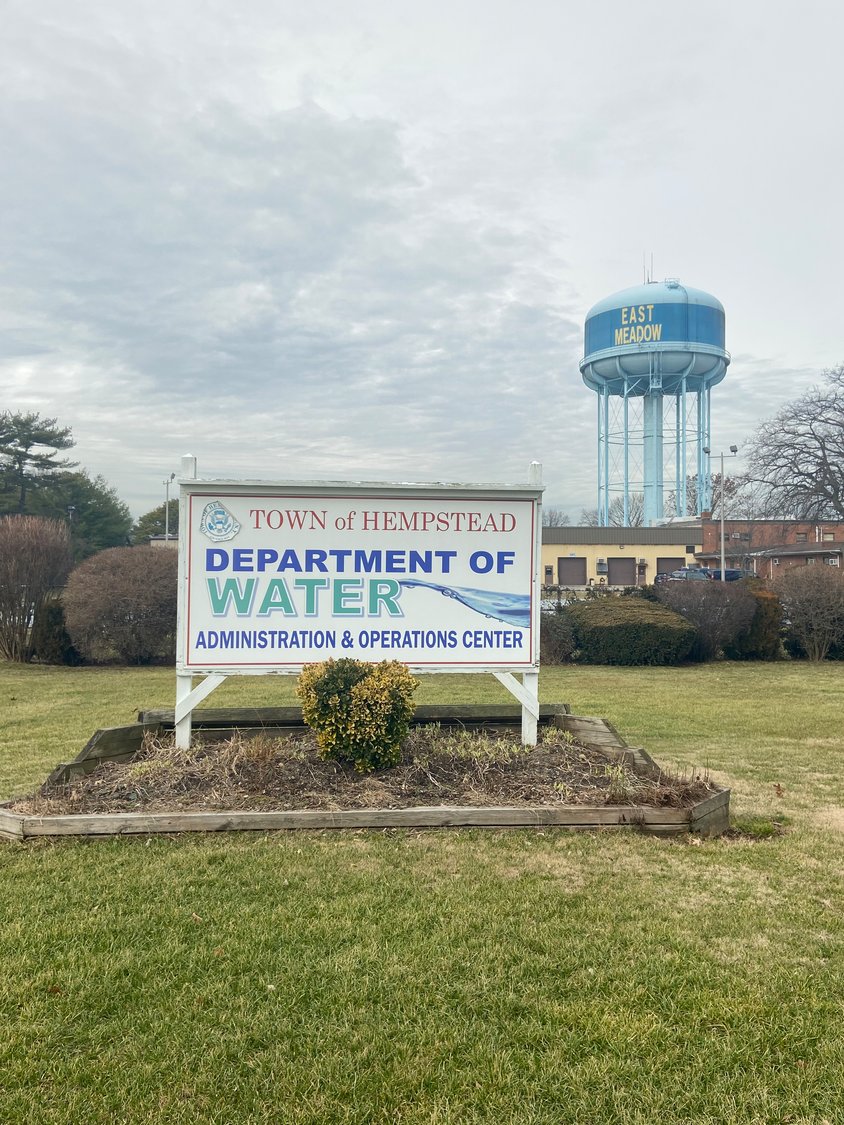Cleaning East Meadow’s water
Federally funded mitigation project is under way
Posted
This is the first of two stories examining dioxane water-mitigation projects.
The Town of Hempstead has received $5 million from Washington to continue improving East Meadow’s drinking water. The funding is part of the $1.7 trillion Omnibus spending bill passed by Congress last month.
Roughly $15 million was available to the 4th Congressional District, which encompasses East Meadow. Fourteen other locations in the district received funding for projects.
“These investments,” Rice said in a statement, “protect our drinking water, expand vital safety net services delivered by local nonprofits, address the mental health and substance use crises, and provide critical job training for Long Islanders.”
The chemical 1,4 dioxane, used as a solvent, can be found in cosmetics, detergents and shampoos. It has also been found in drinking-water wells in the East Meadow Water District, which is part of the Town of Hempstead’s Water Department. In 2013, the Environmental Protection Agency classified 1,4 dioxane as “likely to be carcinogenic to humans by all routes of exposure,” based on finding evidence of carcinogenicity in animals that were purposely exposed to the chemical.
According to a 2019 Herald article, a report by the New York Public Interest Research Group found that Long Island’s drinking water had the highest traces of the compound in New York state. The EPA has a set amount of 1,4 dioxane recommended to be safe in water as 0.35 parts per billion. In July 2020, the State Department of Health formally changed the standard from 5 to 1 parts per billion.
Adrienne Esposito, executive director of Citizens Campaign for the Environment, said the Farmingdale-based advocacy group completed a study about what products the chemical was found in.
“We tested 80 common household products,” Esposito said. “We found surprisingly high levels of 1,4 dioxane in Tide laundry detergent, which had the highest level. It wasn’t just Tide, though, it was other laundry soaps and dish soaps too.”
The drinking water in East Meadow is safe, according to the town, and ever since the maximum contaminant level of 1 ppb was established, the town has been working to remove the 1,4 dioxane from the water. The method to remove the contaminant from the water is an expensive treatment. An advanced oxidation process uses peroxide and ultraviolet light to remove the chemical.
The next step is to put the water into granular activated carbon containers to remove any remaining hydrogen peroxide from the water. Once that process is done, the water is run through monitoring systems to ensure its safety.
When the new standard was set, water departments could apply for deferrals. This gives them time to find enough resources to fund and start the mitigation process. The TOH water district did just that.
In a letter sent to residents in August 2022, the town explained why they applied for a deferral.
“When a public water system is issued a deferral, the water system agrees to a schedule for corrective action and compliance with the new MCLs,” the letter stated. “In exchange, the (state Department of Health) agrees to defer enforcement actions, such as assessing fines, if the water system is meeting the established deadlines.”
The water system is required to update the state and county Department of Health quarterly on the status of the projects. If deadlines are not met, the state can resume enforcement.
But according to Esposito, the clock is ticking for water districts to get on board with the cleaning process. The law saying that the MCL level needs to be 1 ppb goes into effect in August of 2023.
“The funding is extremely timely, because the cost of the advanced oxidation technology is expensive,” Esposito said. “Time is running out. They can no longer receive any more deferral, because there will be no more extension provided by the New York State Health Department.”
The second story in this series will appear in next week’s issue of the Herald.
Report an inappropriate comment
Comments







